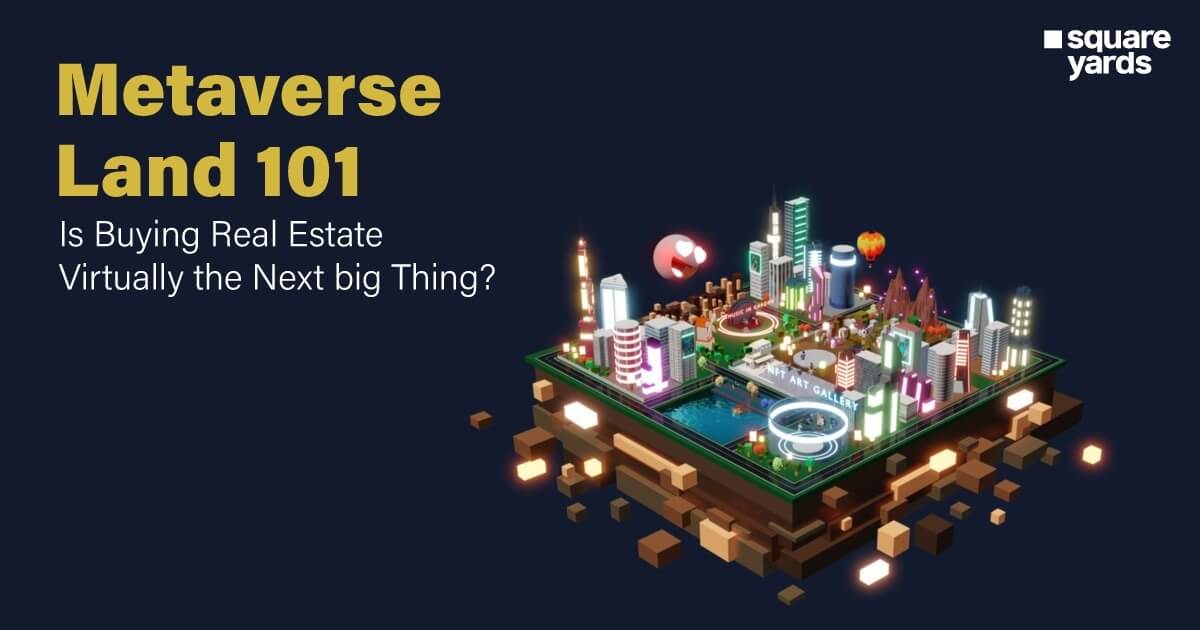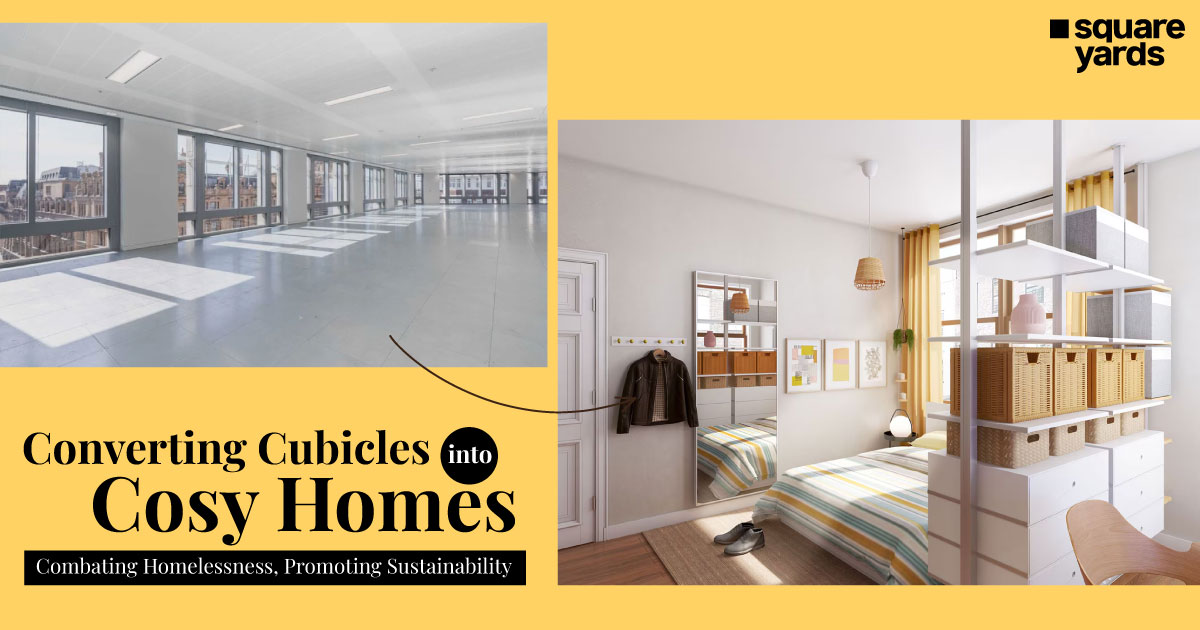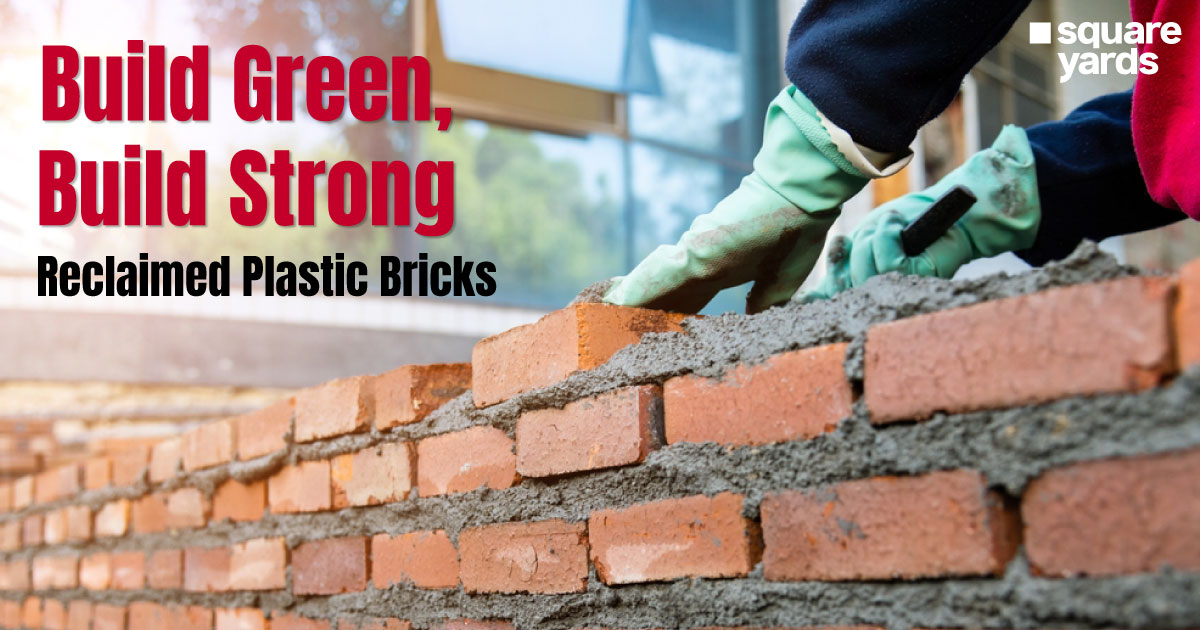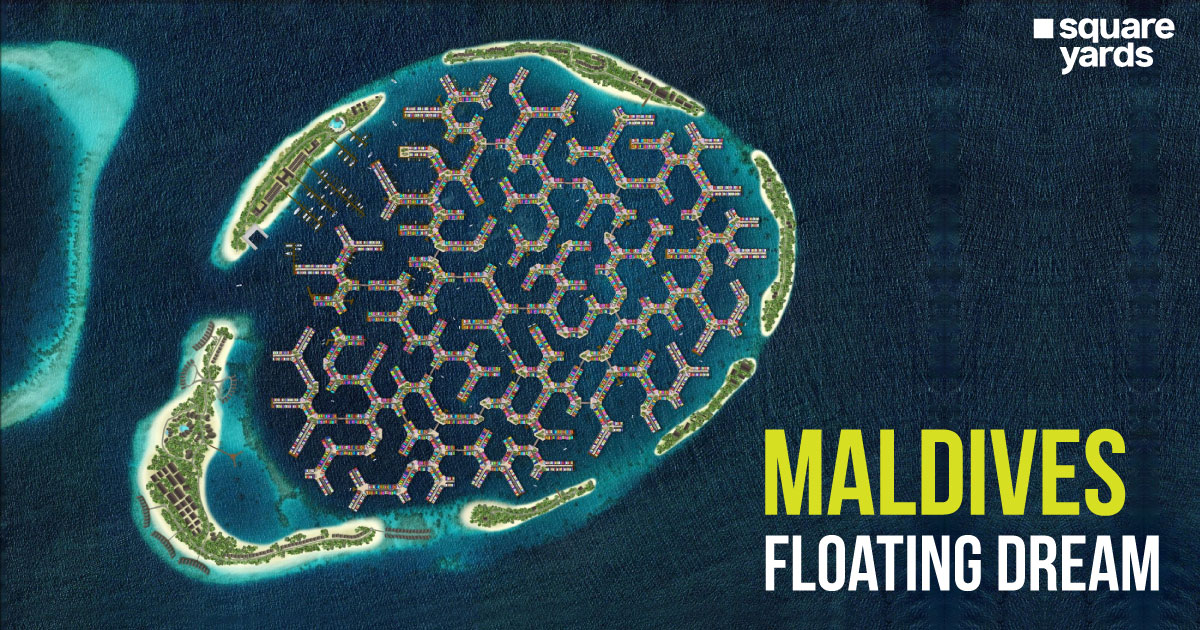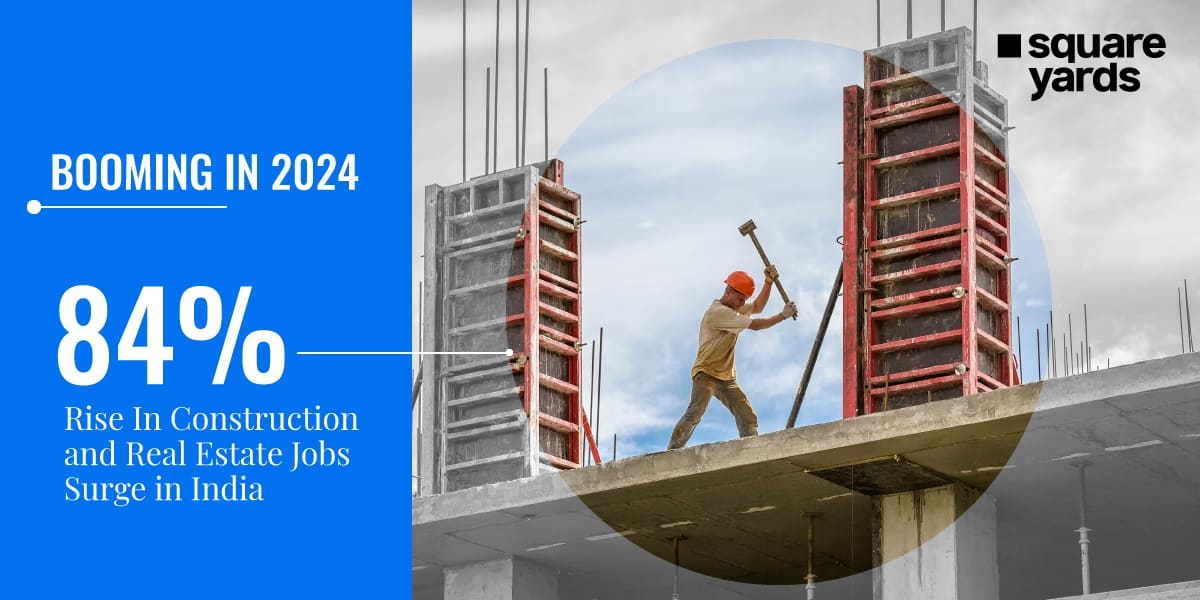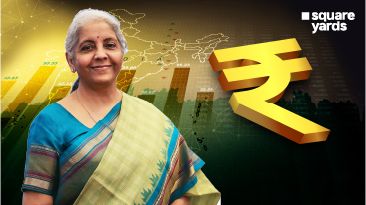Buying real estate can be very expensive. All of us, unfortunately, begrudgingly or not, have had to accept this terrible fact of life. And no, in this blog we will not be referring to buying property in Paris, New York, or London. In fact, it will take you by surprise, but some of the most valuable lands in the world aren’t even on the planet; in fact, it’s not even real!
Cue: Metaverse Land!
That’s right, investors are currently shelling out millions of dollars for land that only exists in 3D virtual environments. As the race for digital properties intensifies, crypto enthusiasts, tech followers, and potential metaverse users are drawn in. But what’s all the commotion about? Today, we’re examining the reasons for and options for participating in the metaverse-land rush!
Table of contents
What is Metaverse?
When virtual reality and mixed reality worlds are combined and accessed via a browser or headset to enable real-time interactions and experiences across physical distances, the resultant system is referred to as the “metaverse.”
Here is an exercise to give you a better understanding of how nebulous and complicated the term “the metaverse” can be: In a sentence, mentally change “the metaverse” to “cyberspace.” The meaning won’t typically change much, 90% of the time. The reason for this is that the phrase really doesn’t refer to any one particular type of technology; instead, it refers to a broad (and frequently speculative) change in how we interact with it. Even as the particular technology it once characterised becomes standard, it is entirely plausible that the phrase itself will ultimately become similarly out-of-date.
Generally speaking, the technologies that businesses refer to when they discuss “the metaverse” can include virtual reality, which is characterised by continual virtual worlds that persist even when you aren’t playing, and augmented reality, which fuses elements of both the digital world and the physical world.
A new digital economy where users have the liberty to create, purchase, and sell goods is something that many businesses that have jumped on the metaverse bandwagon are also hoping to achieve. In the more idealistic depictions of the metaverse, it is transferable, allowing you to move virtual objects like clothing, cars, etc. from one platform to the other.
It’s challenging to interpret what all of this means because an understandable reaction to explanations like those above is “Okay, but doesn’t that already exist?” For instance, the persistent virtual world of World of Warcraft allows players to trade goods. Fortnite introduces its players to concert-like virtual experiences and exhibits where Rick Sanchez can learn about MLK Jr.
History of Metaverse!
We think of the metaverse in contemporary times as a completely immersive internet where one can access virtual and augmented realities and engage with a variety of environments using lasting avatars and cutting-edge computer technology.
But you’ll be surprised to know that Metaverse isn’t as new as you thought!
Sir Charles Wheatstone, a scientist, first described the idea of “binocular vision” in 1838. This is when two images, one for each eye, are combined to create a single 3D image. Stereoscopes, a technology that creates images by creating the illusion of depth, were created as a result of this idea. The same idea is applied to contemporary VR headsets.
Now let’s jump ahead to 1935 and the publication of Pygmalion’s Spectacles by American science fiction author Stanley Weinbaum, whose main character uses a pair of goggles that provide all our senses- sound, sight, smell, taste, and touch to explore a fantastical world.
The Earliest Virtual Reality Machines Virtual
In 1956, Morton Heilig produced the Sensorama Machine, the first VR device. This device immersed the viewer in a 3D video, audio, scent, and vibrating chair simulation of riding a motorbike in Brooklyn. In 1960, Heilig also obtained a patent for the first head-mounted display, which combined stereo sound with stereoscopic 3D images. The Aspen Movie Map, developed by MIT in the 1970s, allowed visitors to embark on a computer-generated tour of the Colorado town of Aspen. For the first time, users could be taken somewhere else using virtual reality.
The 1982 book Snow Crash by Neil Stevenson is where the phrase “metaverse” first appeared. Characters could travel to Stevenson’s metaverse, a virtual world, to get away from a depressing totalitarian reality.
Sega introduced VR arcade games in the early 1990s, such as the SEGA VR-1 motion simulator, which customers enjoyed in many arcades.
The first live NFL game featuring a yellow yard marker was broadcast by Sportsvision in 1998, and the concept of putting graphics over actual views of the field of play quickly caught on in other sports broadcasting.
Then, in 2010, 18-year-old inventor and businessman Palmer Luckey developed the first iteration of the Oculus Rift VR headset. The ground-breaking headset rekindled interest in VR with its field of vision that was 90-degree and the use of processing power from computers.
In 2011, Ernest Cline published the book Ready-Player-One, giving us yet another glimpse into a thoroughly immersive world we could enter to escape reality. The novel was a runaway success, and Steven Spielberg turned it into a film in 2018.
Oculus VR was purchased by Facebook in 2014 for $2 billion. Mark Zuckerberg, the founder of Facebook, announced at the time that the two companies would collaborate to expand the Oculus platform as well as create alliances to support additional games.
Sony and Samsung both revealed they were developing their own VR headsets in 2014, which was a busy year for XR. Google also announced the first ever Cardboard device as well as Google Glass AR glasses. The Google Cardboard gadget is a cheap cardboard virtual reality viewer for smartphones.
In 2016, the first mixed reality AR and VR headsets from Microsoft, called HoloLens, were released on the market. HoloLens allows us to create holographic images in front of us, place them in the real world, and manipulate them there using augmented reality. Additionally, in 2016, players of the augmented reality game Pokémon GO ran around their neighbourhoods attempting to capture Pokémon.
The innovative Place app from Swedish furniture giant IKEA, which lets you choose a piece of furniture and see how it would look in your house or office, added the metaverse to the mix in 2017.
Lidar (light detection and ranging), which Apple added to iPhones and iPads in 2020, improves depth scanning to encourage better pictures and augmented reality (AR) and also paves the way for future mixed-reality headsets. In 2021, Facebook’s name was changed to Meta to reflect its commitment to influencing the metaverse’s future. Furthermore, two companies unveiled highly transportable virtual reality headsets in the form of sunglasses (HTC’s Vive Flow) or smart glasses (Ray-Ban Stories).
In the future, we anticipate further significant advancements in immersive experiences. For instance, Apple is presently developing headsets that might eventually take the place of our mobile phones as the future’s interface to the metaverse.
What is Virtual Land in the Metaverse?
A digital setting called the “metaverse” contains all virtual land. A metaverse is typically a virtual world or video game where you can communicate with other players through a persona that represents you.
You can create a virtual land using 2D pixelated environments, 3D box spaces, or 3D virtual environments that include oceans, mountains, and pretty much anything else you can imagine.
Plots of virtual land sold as NFTs can be purchased either directly from the developer’s website (primary sale) or on a secondary NFT marketplace like OpenSea, though the buying process can vary considerably based on the game as well as the company behind each metaverse.
Why are People Buying Virtual Land in Metaverse?
Unique land with a deed that exists in the virtual realm is known as “virtual real estate.” If you compare this world to a video game, it would have more social and communal elements. Land in the metaverse, a network of virtual worlds where purchasing virtual property is possible, can be just as valuable as real estate and has even caught the interest of well-known figures like Snoop Dogg and corporations like PricewaterhouseCoopers.
Following Facebook’s (NASDAQ:META) name change to Meta and announcement that it would be making investments in the virtual reality market, interest in virtual reality, augmented reality, and metaverse real estate really took off. Nevertheless, the concept of land plots in the online real estate market could seem like a strange investment. In actuality, there are a lot of ways in which they resemble real-world real estate.
They appeal to investors greatly due to two factors:
- First, just like real-world property, virtual real estate is in short supply. Owning virtual real estate entitles you to a special plot of land in a metaverse world that you can use to carry out your plans, including developing revenue-generating assets like rentable structures or engaging public spaces that charge admission or advertise a business.
- Secondly, each piece of metaverse real estate is completely unique and is protected by a NFT or a non-fungible token. An NFT is essentially a deed as well as proof of ownership for a thing that is real (or digital) that can be uniquely identified. Your NFT for virtual real estate establishes your ownership and permits you to transfer ownership to another party. Additionally, it automatically records each transaction involving that property, doing away with the requirement for title work. It resembles a digital deed from the twenty-first century.
Don’t miss It!
| Metaverse | Virtual Reality of Metaverse |
| Virtual Land | How to Buy Virtual Land? |
| Vision of Metaverse | Visions Of Metaverse From Science Fiction |
How to Buy Land in Metaverse?
Due to the specialised terminology and procedures involved, purchasing real estate on the virtual platform may initially seem intimidating. However, it is actually a straightforward process, and you can become the proud owner of virtual land in the metaverse in a few simple steps.
There are two ways to buy virtual metaverse land:
- On a market for NFT
- Directly on the relevant platform in the metaverse
You can either head straight to a particular metaverse platform, like Decentraland Marketplace, and purchase the land NFT there, or you can use a marketplace for NFT such as OpenSea and look for land NFTs of a particular metaverse.
As an alternative, you can buy virtual land NFTs from your preferred metaverse platform—in this case, the Sandbox—by going there.
Once you have decided which metaverse platform you want to purchase land on, you should search both that platform’s market and any secondary NFT marketplaces, such as OpenSea or Binance NFT, to find the best deal.
Be sure to follow these steps before moving forward with the land purchase:
Choose a Metaverse Platform
Decide which metaverse platform you want to buy land on as the first step. The cost, its size, and the seller are some of the factors influencing this choice. Researching which platform would best meet your goals is a good idea if you don’t have one already in mind.
Like some parts of the globe, like New York, London, or Tokyo, where metaverse real estate prices are the most expensive, emerging locations can present more lucrative opportunities, but they also carry a higher risk.
Famous musicians have virtually performed on Roblox, including Zara Larsson, Lil Nas X, and Tai Verdes. Decentraland has hosted online fashion shows for companies like Adidas and D&G, as well as a four-day festival featuring celebrities like Deadmau5 and Paris Hilton. All of these things lead to higher prices and demand.
The lowest-priced plot of land on the two platforms can run you more than $15,000, therefore you ought to also look for other chances. Additional metaverse platforms that are growing include Aavegotchi, Voxels (previously known as Cryptovoxels), Axie Infinity (AXS), and Bit. Country, or Somnium.
Purchase Cryptocurrencies
To use the majority of NFT marketplaces as well as metaverse platforms, you typically need to buy metaverse cryptocurrency beforehand. It suggests that registering for a digital wallet is a prerequisite for buying land on a metaverse platform. For instance, Decentraland can connect to the wallets offered by Fort Matic, Metamask, Coinbase, and WalletConnect.
To make it simpler to use, we recommend integrating a digital wallet that you can add to your browser. By doing so, you can immediately log in to and connect two separate accounts—the wallet and the metaverse platform accounts—by doing so.
No matter which wallet you choose, you have to buy cryptocurrency that is accepted by the platform of the metaverse you’ve selected. For instance, SAND and MANA, the respective digital currencies of Sandbox and Decentraland, are each unique. You will also need some ETH to cover the cost of the gas as these metaverse platforms operate on the Ethereum blockchain.
These digital currencies can be purchased on cryptocurrency exchanges like Binance or Coinbase that are directly linked to your digital wallet. You can proceed to the next step and select the piece of land you want to own after setting up a digital wallet account for cryptocurrency and buying some cryptocurrency.
Choose a Plot of Metaverse Land
After selecting the metaverse platform, setting up your digital wallet, as well as purchasing some cryptocurrency, the following step is selecting the plot of land you wish to buy.
Before buying property in the metaverse, keep the following things in mind:
- Price of the land;
- Size of the land;
- The digital money you must use to make payments;
- Who is the land’s seller;
- Past transactions;
- Possibility of use (gallery, venue for events, store, etc.);
- Size of the metaverse platform;
- The Area- Is there a hub nearby, as well as stores, art galleries, event venues, etc.
Land nearer to “hubs” like shops as well as other public areas in the virtual world tends to be more expensive, similar to the real world where it is comparatively more expensive to purchase property close to landmarks.
For instance, on the virtual world of Decentraland, its users gather in groups in Genesis Plaza, the metaverse’s hub and a place where newcomers can meet. Due to increased interest in construction near busy neighbourhoods and high-traffic areas, nearby plots are typically more expensive.
Complete the Purchase of Your Virtual Land!
You need to go to the secondary market of NFT or the metaverse platform, connect your account and your wallet, and then click on buy after deciding which place is best for your requirements and adding crypto money to your digital wallet.
The exact coordinates of the area you control are displayed on metaverse on a map in the NFT that you purchase. The NFT will be listed under your name as the new owner as soon as the transaction gets approved and is visible in your digital wallet. Your options for using your purchase include holding onto it as a long-term investment, making a profit selling it, or building something on it.
FAQ’s about Metaverse Land
Q1. Is the metaverse selling land?
Yes, Metaverse is selling land. To know more about it, see the recent blog above.
Q2. Can you make money from metaverse land?
Yes, you can! You can rent out your metaverse land to make money off it.
Q3. Can anyone buy land metaverse?
Yes, as long as you have metaverse money, you can buy metaverse land.
Q4. Is metaverse land an NFT?
Plots of land that are virtual can be sold as NFTs, which can be bought on a secondary marketplace for NFT like OpenSea or minted from the company’s website (primary sale), though the buying process can vary greatly based on the game and business behind each metaverse.


